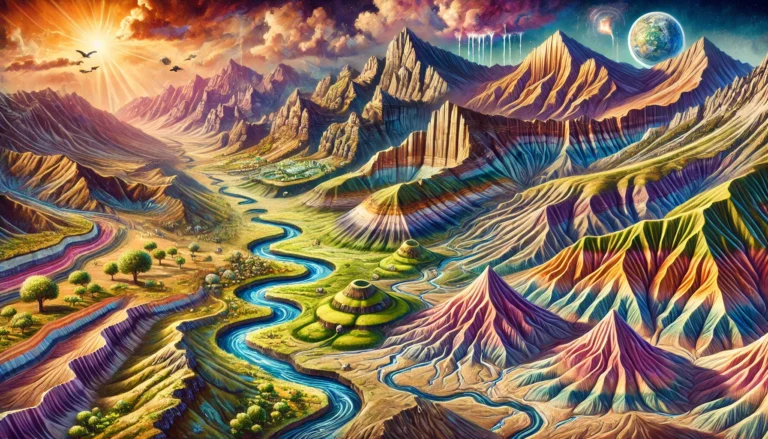Introduction to Marine Resources
So, let’s say you are standing on a serene beach, gazing at the vast, endless blue of the ocean. You see waves crashing onto the shore, fishing boats sailing far into the horizon, and maybe an offshore drilling rig in the distance. Now, let’s embark on a journey to understand what lies beneath and within these waters—the marine resources, which have been shaping human civilization for centuries.
Oceans: A Storehouse of Life and Wealth
Since ancient times, humans have relied on the oceans for transport, trade, and sustenance. Civilizations flourished along coastlines—think of the Harappans, the Romans, or even the Cholas—all of whom mastered the art of using the sea for their prosperity.
But what exactly are marine resources? In simple terms, these are the biotic (living) and abiotic (non-living) resources found within ocean waters and at the seabed. These resources sustain economies, provide food, and even serve as energy reserves.
With the global population exploding and land-based resources depleting, the importance of marine resources has skyrocketed. They hold the potential to feed millions, fuel industries, and even provide alternative energy sources.

Classification of Marine Resources
Like any well-organized study, we will classify marine resources into distinct categories for better understanding.
1. Marine Biological Resources
If the ocean were a grand food chain, at the base of it, you would find phytoplankton—tiny plants floating in the upper layers of the sea, harnessing the sun’s energy. These primary producers serve as food for zooplankton, which in turn are eaten by small fish, which then become prey for larger marine animals like sharks and whales. This is the marine ecosystem at work!
- Fish and Other Seafood: Oceans provide protein-rich food to billions. From tuna and salmon to crabs, prawns, and oysters, marine biodiversity is key to the global food economy.
- Whales: Once widely hunted for blubber (used in oil and cosmetics), whales are now a protected species.
- Medicinal Resources: Sea cucumbers, crabs, and even shark liver oil are used in the pharmaceutical industry to produce medicines and vitamins.
The wealth of marine biodiversity depends on solar penetration (depth up to 200m) and the efficiency of biological cycles. The richer these cycles, the more marine life the ocean sustains.
2. Marine Mineral Resources
The sea does not just provide food—it is also a mine of valuable minerals.
- Salt: The most common mineral derived from the sea, used for cooking, preservation, and even industrial purposes.
- Metallic Deposits: Magnesium, gold, zinc, uranium, thorium—vital for industries and energy production—are found in seawater or seabed deposits.
- Polymetallic Nodules (PMNs): These are potato-sized mineral-rich nodules containing manganese, nickel, cobalt, copper, and iron, found on the deep-sea floor. As land-based resources get exhausted, deep-sea mining is seen as the future of mineral extraction.
- Subsurface Fossil Fuels: The vast continental shelves and ocean basins are home to petroleum and natural gas reserves. 90% of all marine mineral resources come from these deposits.
A fascinating discovery in recent decades is Methane Hydrate, a potential energy source locked in ice-like structures under the seabed, possibly a future game-changer in global energy markets.
This was quite a brief discussion on Marine Mineral resources, we will talk about in detail in later sections.
3. Marine Energy Resources: The Future of Clean Energy
With climate change threatening fossil fuel use, the ocean offers an inexhaustible source of renewable energy. Let’s explore a few innovative ways humans are harnessing the power of the sea:
- Tidal Energy: Some coastal areas experience powerful high and low tides—this motion can be converted into electricity, as seen in the Swansea Bay Project (UK).
- Wave Energy: The bobbing motion of waves can turn turbines, generating electricity.
- Ocean Thermal Energy Conversion (OTEC): Uses the temperature difference between warm surface water and cold deep water to generate power.
Many coastal nations, including India, are actively researching these alternatives to ensure a sustainable energy future.
We will talk about Marine Energy resources in a greater detail in later sections.
4. Freshwater from Oceans: Solving the Global Water Crisis
Water, water everywhere, but not a drop to drink! The irony of the ocean is that while it covers 70% of Earth’s surface, its salty water is undrinkable.
But science has a solution—desalination. By removing salt from seawater, we can obtain potable water. This is already being done in Gulf countries and parts of India, where freshwater is scarce.
Conclusion: The Ocean is Our Future
The oceans are not just vast bodies of water; they are living, breathing ecosystems and treasure chests of natural wealth. As climate change, overfishing, and pollution threaten these resources, sustainable management is the need of the hour.
Governments and scientists worldwide are working on marine conservation, deep-sea mining regulations, and renewable energy innovations. As we look ahead, tapping into marine resources responsibly will be key to the future of humanity.





